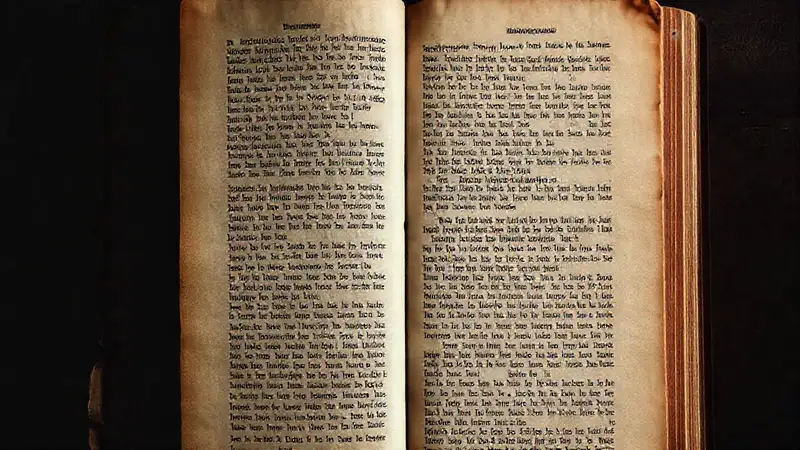How do Literatura Anthologies balance classic and modern works

Literatura anthologies are a fascinating and crucial part of how we experience literature. They act as curated snapshots, offering a condensed view of a literary landscape, whether that landscape is national, thematic, or focused on a particular genre. The very act of selection, deciding which voices and works to include, is a powerful statement in itself, shaping our understanding of what is considered significant within that field.
The challenge for anthology editors lies in striking a delicate balance between honoring established literary giants – the classics – and championing the voices of contemporary authors who are still shaping the literary conversation. Neglecting the classics risks alienating seasoned readers, while ignoring modern voices can lead to an anthology feeling stagnant and out of touch with current trends. This article will explore the complexities of this balancing act, analyzing the strategies employed and the debates surrounding the inclusion of both classic and modern works in literatura anthologies.
## The Enduring Value of the Classics
Including classic works in an anthology isn’t merely a matter of tradition; it's about demonstrating the foundation upon which contemporary literature is built. Classics often offer foundational narratives, recurring themes, and stylistic innovations that continue to influence writers today. Removing these touchstones would deprive readers of a vital understanding of the literary lineage and the evolution of storytelling.
The literary merit of these works is, of course, paramount. Classics have often stood the test of time, repeatedly read, analyzed, and admired across generations. They provide a depth of insight into human nature and societal structures, exploring complex issues with a timeless resonance that modern works often build upon or react against. Anthologies that omit them risk creating a fragmented and incomplete picture of literary history.
However, the inclusion of classics also presents potential pitfalls. Presenting them without context can alienate younger readers unfamiliar with the historical and cultural background of the piece. Editors need to thoughtfully consider how to bridge this gap, perhaps through introductory notes or alongside critical essays, ensuring the classics remain accessible and relevant.
## Representing Contemporary Voices: A Constant Evolution
Anthologies dedicated to modern literature are inherently dynamic, reflecting the ever-changing landscape of literary production. The inclusion of contemporary authors is crucial to showcasing the diversity of voices and perspectives present in current literary dialogues. Modern literature grapples with contemporary concerns, offering reflections on modern society, technology, and identity in ways that classics often cannot.
The challenge here lies in determining what constitutes “modern” and identifying deserving authors. Literary reputations can take time to solidify, and relying solely on immediate commercial success can lead to overlooking truly important, yet less popular, writers. Editors need a keen eye for emerging talent and a willingness to champion voices that challenge conventional norms.
Furthermore, representing contemporary literature requires a conscious effort to include authors from marginalized communities – those whose stories have historically been excluded from the literary canon. This necessitates a proactive approach, actively seeking out and valuing diverse perspectives and ensuring that the anthology reflects the richness and complexity of contemporary experience.
## Thematic Cohesion vs. Chronological Breadth

One major decision in curating an anthology is whether to prioritize thematic coherence or chronological breadth. An anthology organized around a theme (e.g., love, loss, identity) might juxtapose classic and modern works to explore a concept across time, highlighting both continuities and shifts in perspective. This approach can create compelling connections and deepen readers' understanding of the chosen theme.
However, prioritizing thematic coherence might result in a skewed representation of literary history. Classic works might be cherry-picked to fit the theme, potentially overlooking other important aspects of their overall significance. Editors must carefully consider how the thematic framework influences their selection process and ensure they are not unduly limiting the scope of the literary landscape.
A chronological approach, on the other hand, aims to present a historical overview of literature, tracing the evolution of styles, themes, and societal influences. This method can provide valuable context, showcasing how modern writers have responded to and built upon the legacy of the classics. However, it can also feel less cohesive and potentially less engaging, requiring readers to actively synthesize the connections between works from different eras.
## The Role of the Editor: Curator, Interpreter, and Advocate
The editor's role in an anthology is far more than just assembling a collection of texts. They are a curator, responsible for selecting the works that best represent the desired scope; an interpreter, providing context and guiding readers through the selection; and an advocate, championing the voices of both established and emerging authors.
Effective editors recognize their own biases and strive for objectivity in their selection process. They might consult with other experts or solicit feedback from a diverse range of readers to ensure the anthology is balanced and representative. Furthermore, their introductory essays and notes should provide insightful context without imposing their own interpretations on the reader.
Ultimately, the success of an anthology hinges on the editor’s ability to create a cohesive and engaging experience that both honors the legacy of the classics and celebrates the vitality of modern literature. They are the crucial bridge connecting the past, present, and future of literatura.
## Conclusion
Balancing classic and modern works in literatura anthologies is a complex and ongoing challenge. There's no one-size-fits-all solution, and the optimal approach depends on the anthology's specific goals and intended audience. The key is to recognize the unique value each type of work brings – the historical depth of the classics and the contemporary relevance of modern voices – and to find ways to present them in a way that is both informative and engaging.
Ultimately, the purpose of a literatura anthology is not simply to showcase a collection of works, but to foster a deeper appreciation for the breadth and depth of human storytelling across time. By thoughtfully curating a balance of classic and modern literature, editors can create a valuable resource for both seasoned readers and those just beginning their literary journey.
Deja una respuesta